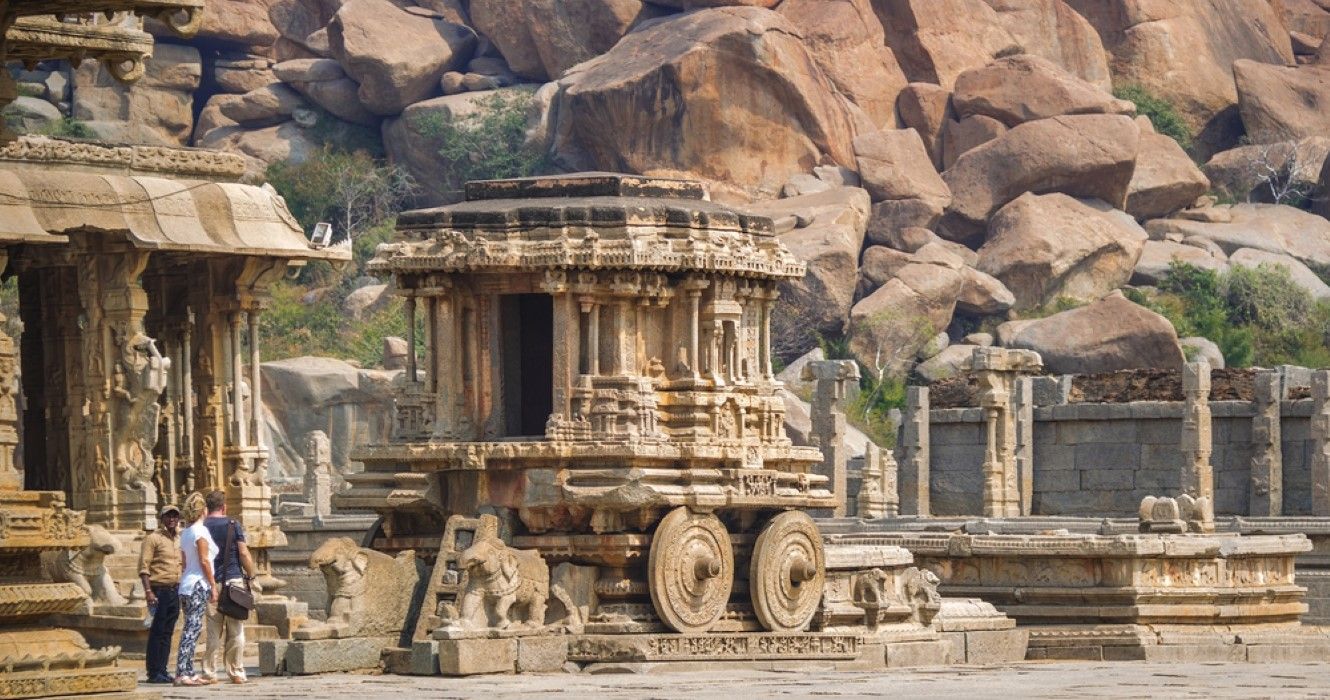India is a whirlwind of a nation with exquisite cuisine, affordable enjoyment, pristine beaches, and curious people. It's the second-largest country by population, with well over 1 billion people living there. India offers something for every traveler, whether a beachy getaway in Goa, a city escape to Delhi, an Instagram aesthetic in Jaipur, or a World Wonder in Agra. If you're headed to India, like anywhere, it's best to show up prepared. Here are ten tips to keep in mind before traveling to India.
10 Safety
Even the most avid of travelers will have their opinion about the safety of India. The meaning of "safety" differs for every individual, and therefore it's a subjective ideology to say whether a place is safe or not. As for India, for women, in particular, there are times it can feel, at the very least uncomfortable. From personal experience, there was a lot of unwanted touching, grabbing, and a lack of personal space. Men are likely to catcall, and sadly, children are likely to follow and beg for money. Does this make a place unsafe? Not necessarily, but it does make a place less comforting. Stay vigilant and aware of your surroundings at all times.
Aside from female safety, it is advised by the US Department of State to avoid the India-Pakistani border due to conflict.
9 Money
There are some nations that are budget-friendly, and then there is India. India is incredibly affordable. The local currency is Indian Rupee, with the current exchange rate being about 82 Rupee to 1 USD. Expect average meals to cost at most $4 and at lowest $0.50. Don't skip out on the street food, especially in cities like Jaipur and Delhi. Even sleeping accommodations feel like a literal steal. HostelWorld offers a hostel at $1/night in Agra, and budget hotels near the Taj Mahal are around $20/night. India is a literal challenge to spend money in, so you might as well go out and live in luxury.
8 Healthcare
Are you nervous about getting traveler's diarrhea? Nervous about getting hit by a tuk-tuk or tripping as you sprint to get an epic photo of the Taj Mahal out of excitement? If you get hurt in India, have no fear. India has affordable healthcare, with pharmacies all over, offering anything from malaria prevention pills to Diamox to over-the-counter Cipro. You'll wonder why the US can't get it together and have a healthcare system like India, though you might wonder that anywhere you go if you're a US Citizen. Even at the Mumbai Airport, there's a pharmacy offering anything you might need. Oh, and it won't break the bank. Pills will cost maybe $1 or $2.
7 Going Solo
Want to venture to India alone? Go for it, but be prepared. India can be solo-friendly, but it's certainly best to do your homework, especially as a female. If you plan to go solo, it's advised that you already have some solo traveling under your belt. That way, you'll be better equipped to handle some of the chaos India is bound to throw at you. This is not to say India as a solo traveler is a bad idea, but the overwhelming vibrant senses of the smells, sights, tastes, and everything else that is so vastly different from quite literally anywhere else on planet earth won't take you by surprise as much as they would if you already have done a bit of traveling. If you want to go solo, TheTravel says go for it!
6 Hiring A Guide
Maybe you're traveling solo, but you still want the local scoop. Why not hire a guide? Guides can be found pretty much anywhere in India, and though you could pre-hire one, it's incredibly easy to just find one when there. Haggle with someone who's offering, and you can likely get a personal guide, if you so choose, to places such as Jaipur Palace, Taj Mahal, and more. If you're a history buff and don't simply want to stare at a place without knowing what you're looking at, a guide is a great option.
5 Sleeper Buses
Did you really go to India if you didn't take a sleeper bus? Many people who have been to India will ask you this, and it will infiltrate your brain that taking a sleeper bus in India is a requirement. Well, it's sort of true, but it depends on the context. Sleeper buses in India are a common way to get from Point A to Point B in this incredibly large nation. Sleeper buses are exactly as advertised; a bed in a bus, where you can sleep overnight until you reach your destination. However, know what you're booking. Sometimes, a ticket on a sleeper bus means a PORTION of a bed, meaning, yes, you will be sharing a bed with a complete stranger (or your friend or partner if you're not traveling alone). This is something to quadruple-check and keeps in mind, so you're not in for a surprise slumber party with another unknown human being.
4 Getting Around
Is there an Uber in India? Is it safe to hail a cab? Should I rent a car or a scooter? These are all valid questions when traveling anywhere, but for somewhere like India, where the streets are often filled with chaotic traffic, these questions ring particularly essential. Yes, Uber exists in India and is cheap. Hailing a cab is an option, but you're more likely to hail a TukTuk, and it's advisable to get the price before getting in. Don't forget to haggle down the price! This is nearly a requirement in India. It is not recommended to rent a car, scooter, or bike in India. The drivers, especially in larger cities, seldom follow road rules, seldom stay in their lanes, and kind of do their own thing. Why take the chance when getting around without a vehicle is extremely affordable and reliable?
3 The Food
If you tell anyone you're headed to India, they'll likely tell you to be careful with the food. Indian cuisine in India is not white-washed chicken tikka masala and tandoori (though if that's what you order, you won't be disappointed). The flavors of the food in India are incredible. Toasted cardamom, smells of chilis, and hot cups of chai being poured on every corner will take over your senses. Though it can be an adjustment to your digestive system, it's recommended to eat as much as you can handle in India; the wide variety of cuisine options will leave you with many choices as to how to indulge, and though, yes, you might get a little bit of an upset stomach, don't forget that there are pharmacies all over to help you deal with it. India is also an exceptional travel option for vegetarians.
2 Visas
It's always wise to look ahead of time to see if there are any visa requirements when entering a new nation. This varies from place to place and is subject to change on any given day. Entry to India does require a visa for most foreigners, and though some can be obtained on arrival, it's wise to do proper research ahead of time to ensure you're not mistakenly entering a new nation without being properly prepared. When obtaining visas on arrival, it's also always wise to determine if they need to accept crisp bills and in what currency or if they're willing to take cards.
1 Photography
Pictures, or it didn't happen. You might be surprised to find that many of the sites you visit in India won't allow a tripod. This particularly rings true for the Taj Mahal; do NOT bring a tripod, or you will not be allowed in. If you are solo traveling, this might pose as an issue, but you can get creative and find other ways to take the epic shot. It's also worth noting that the operation of drones by foreigners is not allowed. There are still plenty of ways to get a great shot in India, and you can certainly still bring a tripod, but if you're traveling solo, it might be worth tipping a local a few Rupees to take some photos of you.


